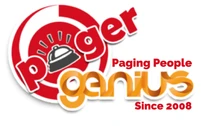Blogs from Around the Industry
-
Paging systems have been a critical part of communication in various industries for decades. As libraries evolve to meet the changing needs of their patrons, the integration of paging systems is becoming increasingly vital. This article will explore how a...
-
Assisted living facilities provide a safe and nurturing environment for seniors who require assistance with daily activities, while still maintaining a certain level of independence. A vital component in achieving this balance is a reliable paging system that allows for...
-
Food trucks have become an increasingly popular dining option, offering a diverse range of cuisines in a convenient and mobile format. However, one challenge that food truck operators face is efficiently managing customer orders and ensuring a smooth flow of...
-
A paging system can be a valuable tool for a dental office to improve communication and efficiency. Here are some tips on how to use a paging system effectively: Assign pager numbers: Assign pager numbers to each patient or group...
-
In today's fast-paced world, it's essential for churches to have reliable and efficient communication systems in place, especially in nurseries where young children are involved. One tool that has proven to be an excellent solution for this purpose is the...

